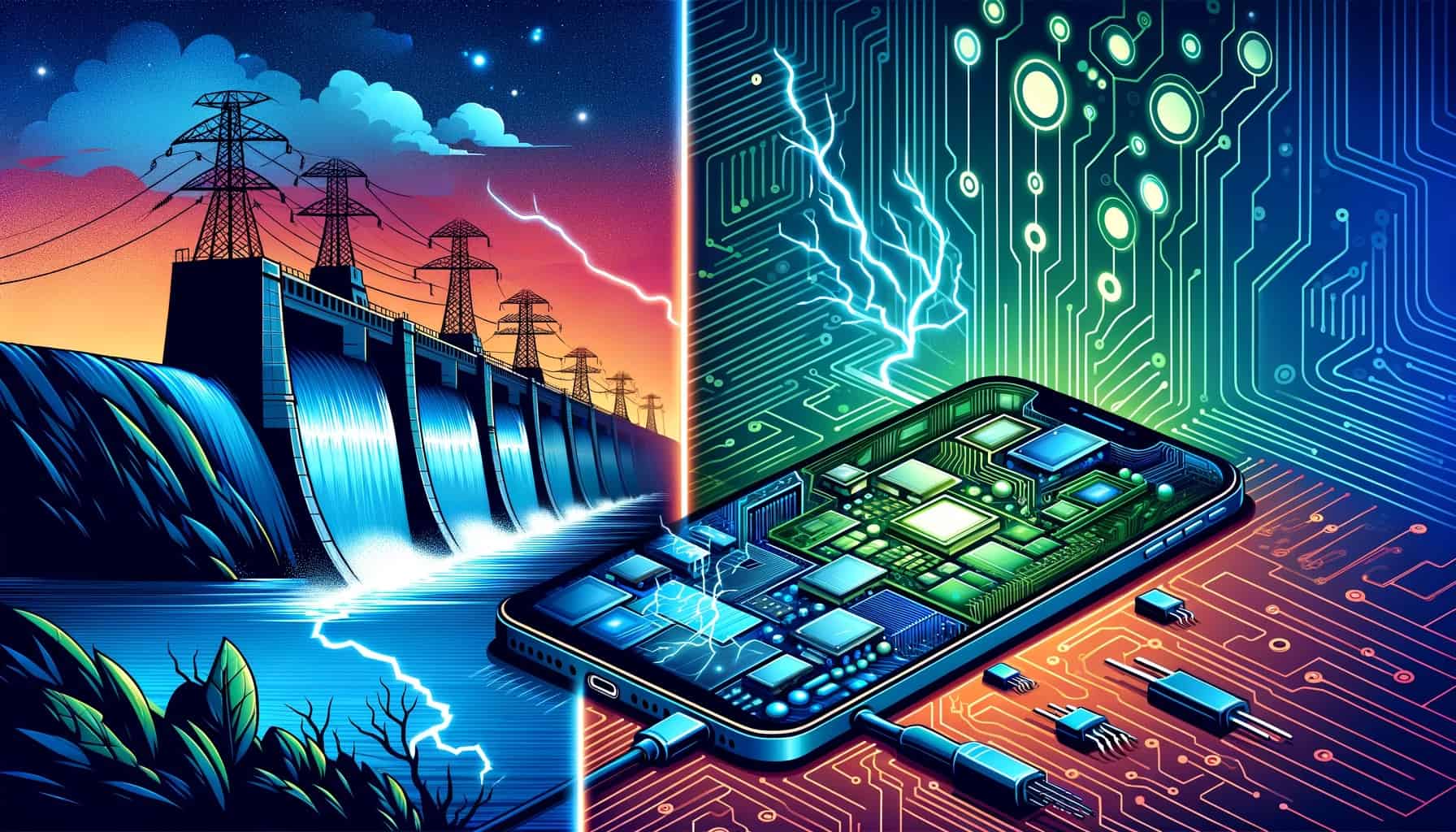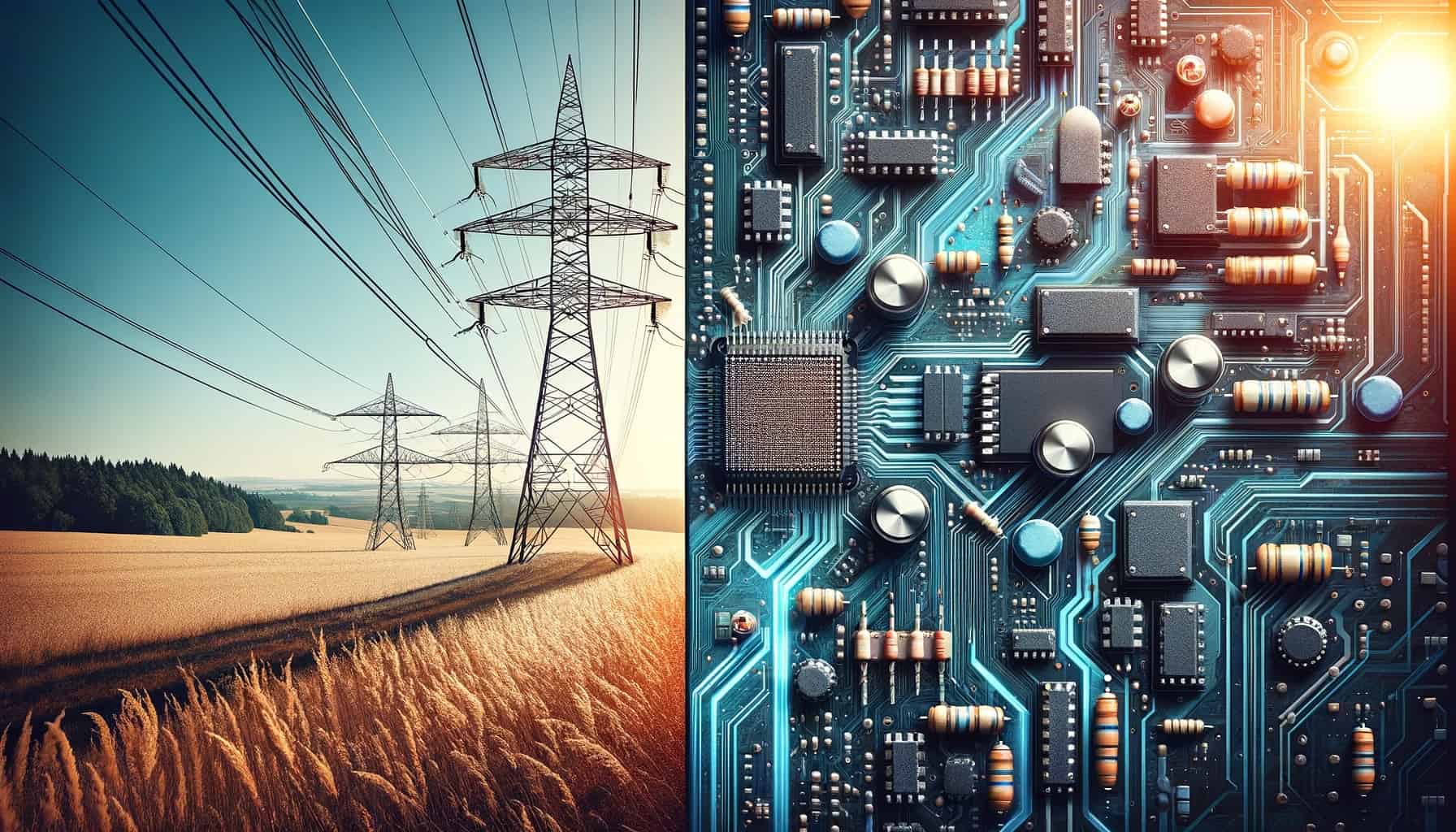Difference between electrical and electronics
by Yogi P - November 3, 2023
Difference between electrical and electronics | Electrical vs. Electronics
In the realms of science and engineering, “electrical” and “electronics” are terms often used interchangeably by the layperson, but they refer to distinct fields, both crucial to the fabric of modern technology.
While both stem from the study of electromagnetism and involve the flow of electrical current, their applications, components, and the principles that govern them differ markedly.
Grasping the Basics: Electrical
Electrical technology primarily concerns itself with the generation, transmission, distribution, and use of electrical power. Think of it as the heavy industry side of electricity, involving high voltages and currents to power everything from households to entire cities.
Key Aspects of Electrical Technology:
- Power Generation and Transmission: It deals with the production of electricity in power plants and its transmission across distances through the power grid.
- High Voltage Systems: Electrical systems operate at high voltages to efficiently transmit power with minimal losses.
- AC Systems: The focus is usually on alternating current (AC), which is used in power systems for its ability to be transformed to higher or lower voltages.
- Machinery: Electrical engineering covers the design and application of motors, generators, transformers, and the electrical aspects of heavy machinery.
- Electrical Parameters: The key parameters include voltage, current, power (both active and reactive), and resistance.
Delving into the Details: Electronics
Electronics, by contrast, is the field that uses electrical current to process information or control systems, operating at much lower voltages and currents. Electronics make up the brains of technology, focusing on circuits that handle data, signals, and system control.
Key Aspects of Electronics Technology:
- Signal Processing: Electronics manipulate the flow of electrons to interpret or modify signals for various applications, such as in computers or communication devices.
- Low Voltage Systems: Electronic devices typically work at lower voltages, suitable for intricate tasks and safe for human interaction.
- DC Systems: Direct current (DC) is prevalent in electronics because many electronic devices require a stable, unidirectional flow of current.
- Components: This field focuses on components like semiconductors, resistors, capacitors, inductors, and transistors.
- Electronic Parameters: Here, the focus is on frequency, signal amplitude, bandwidth, and digital logic levels.
The Intersection and Interaction
While electrical and electronics engineering are different, they often intersect. For instance, a computer (an electronic device) needs power from an electrical outlet to operate, while an electric motor (an electrical machine) might be controlled by an electronic circuit.
Practical Applications
The applications of both fields are ubiquitous and varied:
Electrical Applications:
- Powering homes, offices, and industries with electricity.
- Electric motors used in heavy machinery and household appliances.
- Electrical power stations and the grid.
Electronic Applications:
- Smartphones, laptops, and all manner of computing devices.
- Digital sensors and control systems in automation.
- Communication systems, from radios to satellite transmissions.
Component Comparison
At the heart of the distinction are the components that each field employs:
Electrical Components:
- Transformers, which step voltage levels up or down.
- Circuit breakers and fuses for safety.
- Transmission lines for conducting power over long distances.
Electronic Components:
- Transistors, the building blocks of digital devices.
- Integrated circuits (ICs) and microprocessors.
- Diodes, including LEDs, for various signaling and lighting functions.

Electrical and electronics
Overview Table: Difference between Electrical and Electronics
| Aspect | Electrical | Electronics |
|---|---|---|
| Focus | Power generation, transmission, and machinery. | Signal processing, computing, and control systems. |
| Voltage & Current | High voltage and current for power transmission. | Low voltage and current for signal integrity. |
| Current Type | Alternating Current (AC) predominantly. | Direct Current (DC) predominantly. |
| Components | Transformers, circuit breakers, power lines. | Transistors, resistors, capacitors, ICs. |
| Materials | Copper, aluminum, steel (for wiring and infrastructure). | Silicon, germanium (semiconductors). |
| Applications | Power distribution, electrical utilities, heavy machinery. | Computers, communication, consumer electronics. |
| Safety Concerns | Electrocution, short circuits, overloading. | Electronic waste, signal interference. |
| Measurement Parameters | Voltage, current, power, resistance. | Frequency, signal amplitude, digital logic levels. |
| Device Examples | Electric motors, generators, transformers. | Smartphones, computers, electronic watches. |
| Field of Study | Electrical engineering. | Electronics engineering. |
Environmental and Economic Impact
Both fields significantly impact the environment and economy. Electrical technology is key to the development of renewable energy sources, whereas electronics drive the information technology industry, which is a major economic sector.
The Future: Convergence and Innovation
The future is likely to bring further convergence between the two fields. Power electronics is an area that combines power (electrical) and control (electronics) to improve the efficiency of systems like electric vehicles and renewable energy systems.
Conclusion
Understanding the differences between electrical and electronics is not just an academic endeavor; it has real-world implications. From the power lines crisscrossing landscapes to the smart devices in our pockets, the distinction between electrical and electronics defines the capabilities and applications of these technologies.
Recognizing this differences between electrical and electronics allows us to appreciate how the flow of electricity shapes the modern world, powering our devices, and driving innovation forward. As technology advances, the line between electrical and electronics engineering blurs, leading to new and exciting cross-disciplinary fields that promise to revolutionize how we use and conserve energy.










